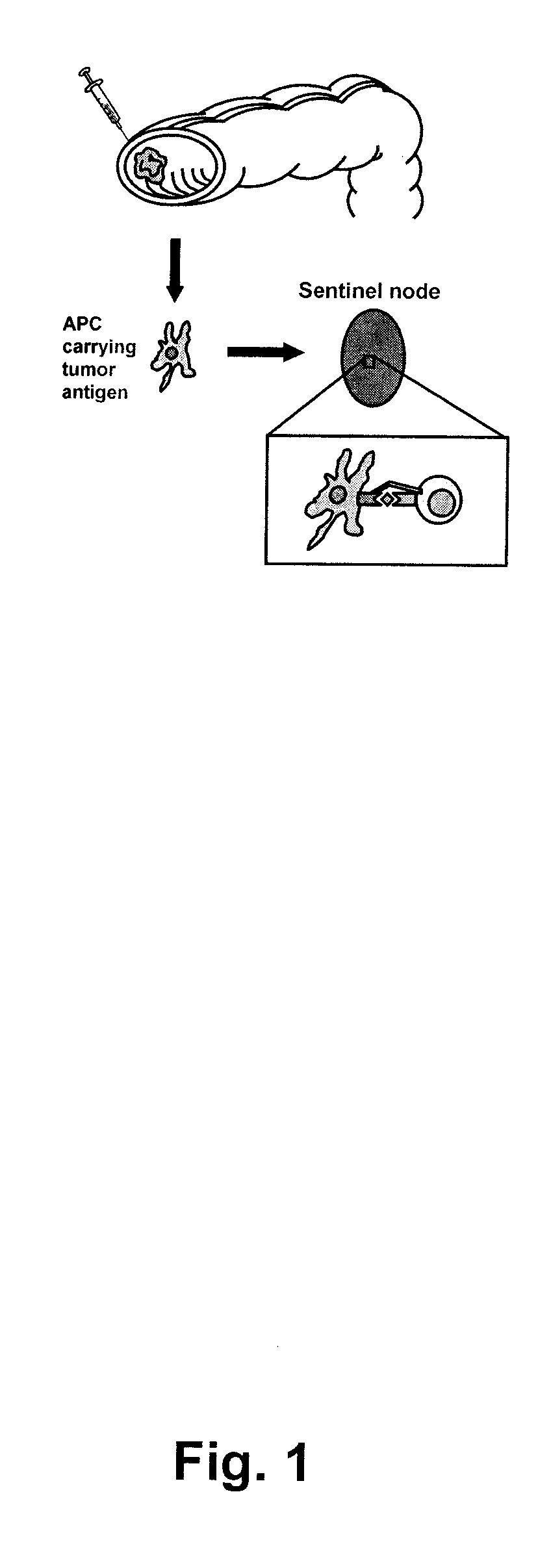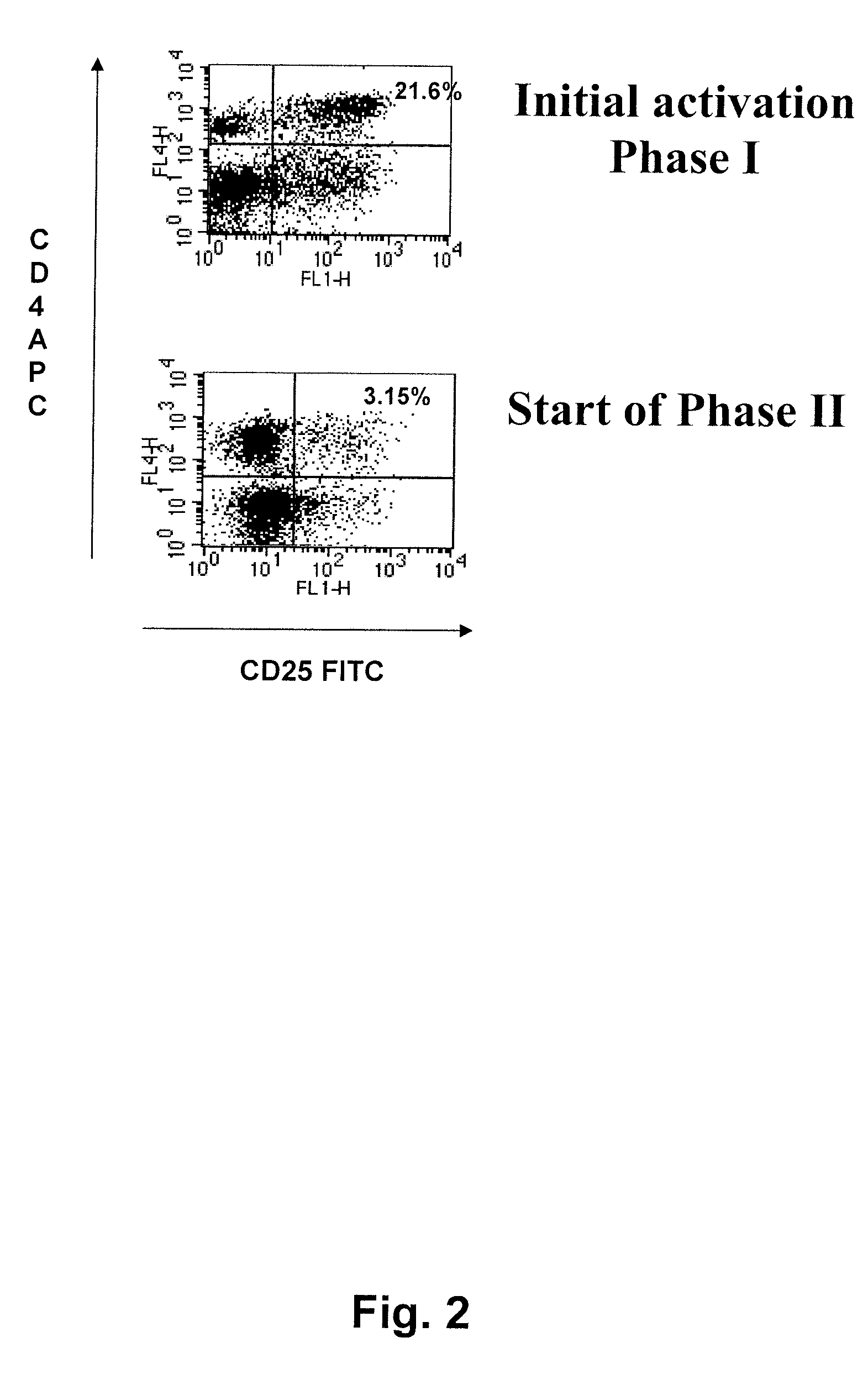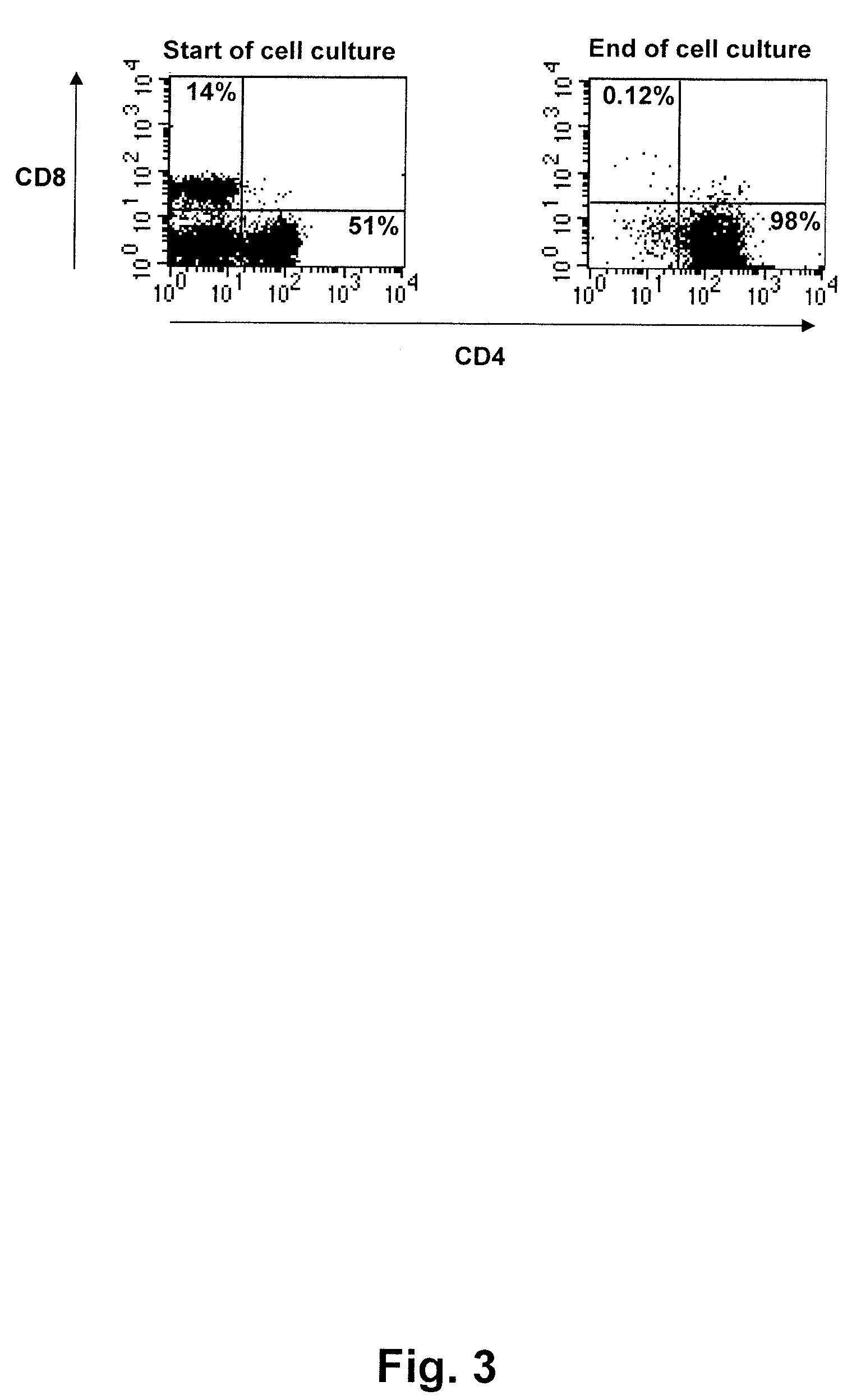Method for expansion of tumour-reactive t-lymphocytes for immunotherapy of patients with specific cancer types
a tumour-reactive and immunotherapy technology, applied in the field of improved methods for expanding and activating tumour-reactive lymphocytes, can solve the problems of breast cancer that is still poorly understood, disease is usually deadly, and the disease is generally very poor
- Summary
- Abstract
- Description
- Claims
- Application Information
AI Technical Summary
Benefits of technology
Problems solved by technology
Method used
Image
Examples
example 1
Expansion of Tumour-Reactive T-Lymphocytes
[0173]Identification of sentinel nodes was done peroperatively using the sentinel node technique. Briefly, 1 ml of Patent blue dye was injected (Guerbet, Paris) and distributed superficially in the serosa around the tumour. Within five to ten minutes, one to three mesenteric lymph nodes were coloured blue, these sentinel nodes were marked with sutures and removed (see FIG. 1). One non-sentinel mesenteric lymph node, distant from the tumour, was also identified and removed as a control.
[0174]The sentinel- and non-sentinel lymph nodes were cut in half and 1 mm thick slices were taken from the center and the periphery. The rest of the lymph nodes were sent for histopathological examination according to routine procedure. A part of the tumour, including a sample of the invasive margin, was also removed for research purposes.
cell culture
Phase 1, Initial Activation
[0175]The sentinel node material was kept on ice and immediately taken care of using...
example 2
Treatment of Colon Cancer by Administering Tumour-Reactive T-Lymphocytes
[0184]Identification and Removal of Sentinel and Metinel Lymph Nodes from Colon Cancer Patients:
[0185]Sixteen patients diagnosed with colon cancer, six woman and ten men with an average age of 62 years were studied. Patients were histopathologically classified as Duke's C or D. There were also 5 patients with Duke's B with aggressive tumour characteristics such as ulcerations, vascular or perineural invasion. Patients 7 and 14 however had earlier been surgically treated due to colon cancer and now had recurrent disease with metastases to the liver. The local ethical committee approved the study and each patient gave informed consent.
[0186]Identification of sentinel or metinel nodes was done intraoperatively. Mobilisation of the colonic tumour site was achieved by division of peritoneal adhesions in order to facilitate inspection of tumour and mesentery. Injections of Patent blue dye (Guerbet, Paris) were distrib...
example 3
Expansion of Lymph Node Acquired Lymphocytes from Patient with Gallbladder Cancer
[0201]On day one, cell cultures containing approximately 35 million (Culture 1) and 5 million cells (Culture 2) was set up.
[0202]Throughout the whole culturing period, cells were kept in incubator at 37° C. and 5% CO2 and 240 IU IL-2 / mL media added every 3-4 days.
[0203]Initially, both cultures contained a high proportion of red blood cells which eventually decreased as only lymphocytes proliferated in the cultures.
[0204]On day 3, autologous tumor extract were added to both cultures at a concentration of 1 / 100.
[0205]On day 10, phase II was initiated in both cultures by adding radiated antigen presenting cells, autologous tumor extract and interleukin-2 (240 IU / ml) to the cultures. At this stage, the cultures contained approximately 45 million and 15 million lymphocytes, respectively.
[0206]Cultures were maintained regularly by keeping the cell concentration at approximately 3 million cells / ml.
[0207]Cells ...
PUM
| Property | Measurement | Unit |
|---|---|---|
| time | aaaaa | aaaaa |
| time | aaaaa | aaaaa |
| time | aaaaa | aaaaa |
Abstract
Description
Claims
Application Information
 Login to View More
Login to View More - R&D
- Intellectual Property
- Life Sciences
- Materials
- Tech Scout
- Unparalleled Data Quality
- Higher Quality Content
- 60% Fewer Hallucinations
Browse by: Latest US Patents, China's latest patents, Technical Efficacy Thesaurus, Application Domain, Technology Topic, Popular Technical Reports.
© 2025 PatSnap. All rights reserved.Legal|Privacy policy|Modern Slavery Act Transparency Statement|Sitemap|About US| Contact US: help@patsnap.com



